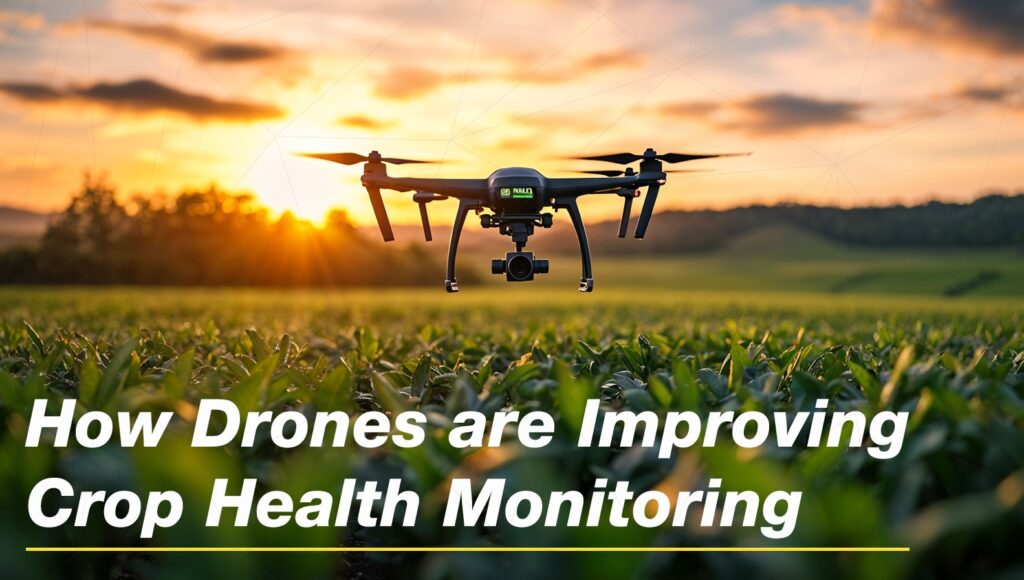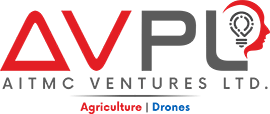
How Drones are Improving Crop Health Monitoring
The agricultural industry has undergone a significant transformation in recent years, driven by technological advancements. One of the most impactful innovations is drone technology, revolutionizing crop health monitoring. Drones provide farmers with an efficient and precise method to assess their crops, enabling them to make informed decisions that lead to improved yields and sustainability. This blog explores how drones enhance crop health monitoring, the technologies involved, and their benefits to the agricultural sector.
1. Understanding Crop Health Monitoring
Before integrating drones into your agricultural operations, it’s crucial to understand their capabilities and features. Drones with high-resolution cameras, multispectral sensors, and GPS technology offer valuable insights into crop health, soil conditions, and more. As the best drone company in India, AVPL International provides a range of drones tailored for agricultural use, ensuring you have the right tools for your needs.
1.1 Importance of Crop Health Monitoring
Monitoring crop health is crucial for several reasons:
• Early Detection of Problems: Identifying issues such as pests or diseases early allows farmers to
take corrective actions before significant damage occurs.
• Optimized Resource Use: Understanding crop health helps farmers apply fertilizers, water, and
pesticides more effectively, reducing waste and costs.
• Improved Yields: Timely interventions based on accurate data can lead to healthier crops and
higher yields.
• Sustainability: Farmers can adopt sustainable practices that protect the environment and
preserve natural resources by monitoring crop health.
The Role of Drones in Crop Health Monitoring
Drones, or uncrewed aerial vehicles (UAVs), have become essential for farmers looking to enhance their crop health monitoring efforts. Equipped with various sensors and cameras, drones can capture high–resolution images and collect valuable crop data. Here are some of the critical roles drones play in monitoring crop health.
2.1 High-Resolution Imaging
Drones can fly over fields and capture high–resolution images from various angles. This capability allows farmers to see their crops in greater detail than traditional methods. Drones equipped with RGB (red, green, blue) cameras can produce clear images highlighting variations in crop health across the field.
2.2 Multispectral and Hyperspectral Imaging
Drones can also have multispectral and hyperspectral cameras that capture data beyond the visible spectrum. These cameras can identify subtle changes in plant health by detecting specific wavelengths of light reflected by the crops. For example, chlorophyll absorbs particular wavelengths, so healthy plants reflect light differently than stressed or diseased ones. This technology allows farmers to assess
plant health, nutrient levels, and water stress accurately.
2.3 Thermal Imaging
Thermal cameras mounted on drones can measure temperature variations in crops. This information is vital for assessing water stress, as stressed plants often exhibit higher temperatures than healthy ones. By monitoring temperature changes, farmers can identify areas that require irrigation and prevent crop loss due to drought.
2.4 Real-Time Data Collection
Drones can gather data quickly and efficiently, providing farmers with real–time insights into crop health. This rapid data collection enables timely decision–making, allowing farmers to respond to issues as they arise. Traditional monitoring methods may take days or weeks to provide similar insights, but drones can deliver actionable data within hours.
Benefits of Using Drones for Crop Health Monitoring
The adoption of drone technology for crop health monitoring brings several significant benefits to
farmers:
3.1 Enhanced Precision
Drones provide high–resolution data that allows for precise monitoring of crop health. This precision enables farmers to identify specific areas of concern within their fields rather than relying on broad assessments. By pinpointing problem areas, farmers can take targeted action, reducing the overall use of inputs like fertilizers and pesticides.
3.2 Cost-Effective Solutions
While the initial investment in drone technology may seem high, the long–term cost savings can be substantial. Drones can help farmers optimize resource use, reducing input costs and improving yield potential. Additionally, drones can protect farmers’ investments by preventing crop loss through early detection of issues.
3.3 Improved Crop Yields
3.4 Sustainable Farming Practices
Drones promote precision agriculture, which contributes to more sustainable farming practices. By applying inputs only where and when needed, farmers can minimize environmental impact and conserve resources. This targeted approach also helps maintain soil health and biodiversity.
3.5 Increased Efficiency
Drones significantly enhance the efficiency of crop health monitoring. Instead of manually inspecting fields, which can be time–consuming and labour–intensive, farmers can deploy drones to cover large areas quickly. This efficiency allows farmers to focus on other critical tasks, improving overall farm management.
Practical Applications of Drones in Crop Health Monitoring
4.1 Pest and Disease Detection
Drones with multispectral cameras can identify early signs of pest infestations and crop diseases. Farmers can pinpoint areas that require immediate attention by analyzing data collected from the air. Early intervention can prevent the spread of pests and diseases, ultimately protecting yields
4.2 Nutrient Management
Drones can assess nutrient levels in crops, helping farmers optimize fertilizer application. By analyzing vegetation indices derived from drone imagery, farmers can determine where nutrient deficiencies exis tand apply fertilizers accordingly. This targeted approach minimizes waste and promotes healthier crops.
4.3 Irrigation Management
Using thermal imaging, drones can identify areas of a field that are over– or under–watered. Farmers can adjust their irrigation systems by monitoring temperature variations to ensure that crops receive adequate moisture. This efficient water management is essential for maintaining crop health, especially in arid regions
4.4 Crop Damage Assessment
Drones can quickly assess crop damage after adverse weather events or natural disasters. By capturing high–resolution images of affected areas, farmers can evaluate the extent of the damage and determine the best course of action. This rapid assessment helps farmers make timely decisions regarding replanting or applying treatments
Challenges and Considerations
5.1 Regulatory Issues
Drone operations are subject to regulations that vary by country and region. Farmers must comply with local drone use laws, which may include obtaining permits and following safety guidelines.
5.2 Initial Investment
The cost of drones and the necessary sensors can be a barrier for some farmers, mainly small–scale operations. However, as technology advances and prices decrease, the accessibility of drone technology is expected to improve.
5.3 Technical Expertise
Farmers may require training to operate drones effectively and interpret the data collected. Collaborating with agricultural technology providers can help bridge this gap and provide essential support.
5.4 Weather Dependency
Drones are sensitive to weather conditions, and adverse weather can limit their operation. High winds, rain, or low visibility can hinder data collection, requiring farmers to plan their flights accordingly.
The Future of Drones in Agriculture
6.1 Integration with AI and Machine Learning
Integrating artificial intelligence (AI) and machine learning with drone technology is poised to enhance crop health monitoring further. AI algorithms can analyze large datasets collected by drones, providing farmers with deeper insights and predictive analytics. This technology will enable farmers to anticipate potential issues, further optimizing their farming practices.
6.2 Increased Automation
As automation becomes more prevalent in agriculture, drones will play a crucial role in streamlining farm operations. Automated drones can be programmed to perform routine monitoring tasks, freeing up farmers to focus on higher–level management decisions.
6.3 Expansion of Applications
The range of agriculture drone applications will likely expand in the coming years. New sensor technologies and imaging techniques will enable farmers to monitor additional factors affecting crop health, such as soil moisture content, pest populations, and environmental conditions.
Conclusion
Drones are revolutionizing crop health monitoring, providing farmers with the tools to enhance productivity, optimize resource use, and promote sustainable practices. By leveraging drone technology, farmers can make informed decisions that lead to improved crop yields and healthier ecosystems. As technology continues to advance, drones’ potential in agriculture will only grow. Embracing this innovation will be essential for farmers looking to thrive in an increasingly competitive and resource–constrained world. The future of farming is bright, and drones will play a pivotal role in shaping that future, ensuring a sustainable and prosperous agricultural landscape for generations to come.

